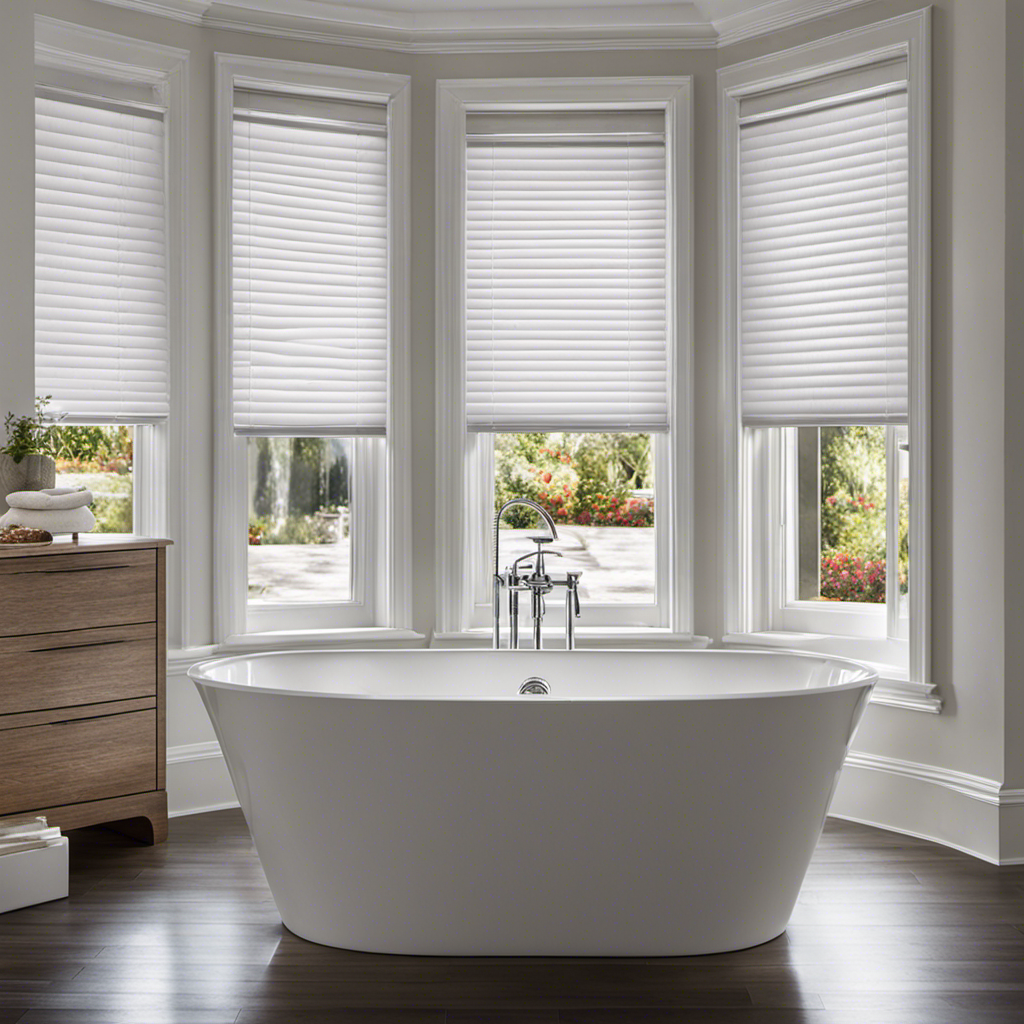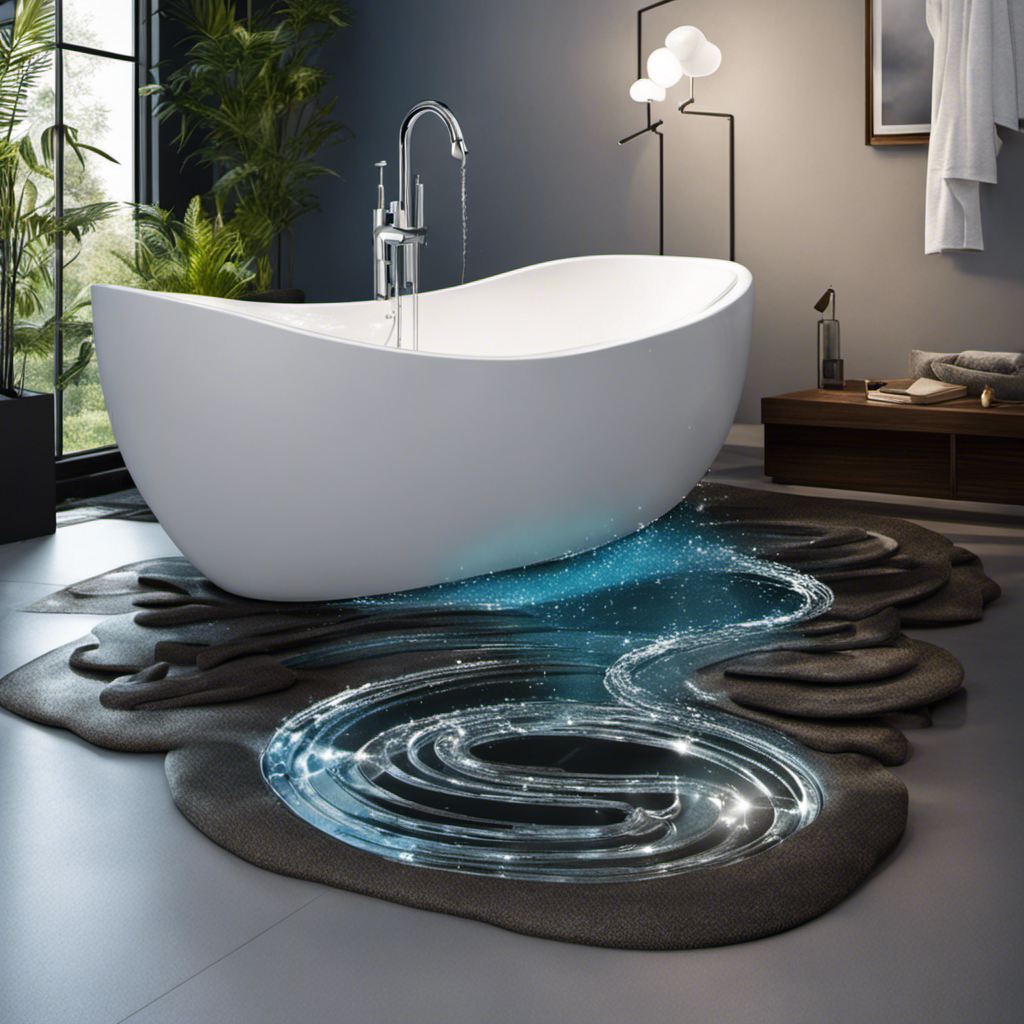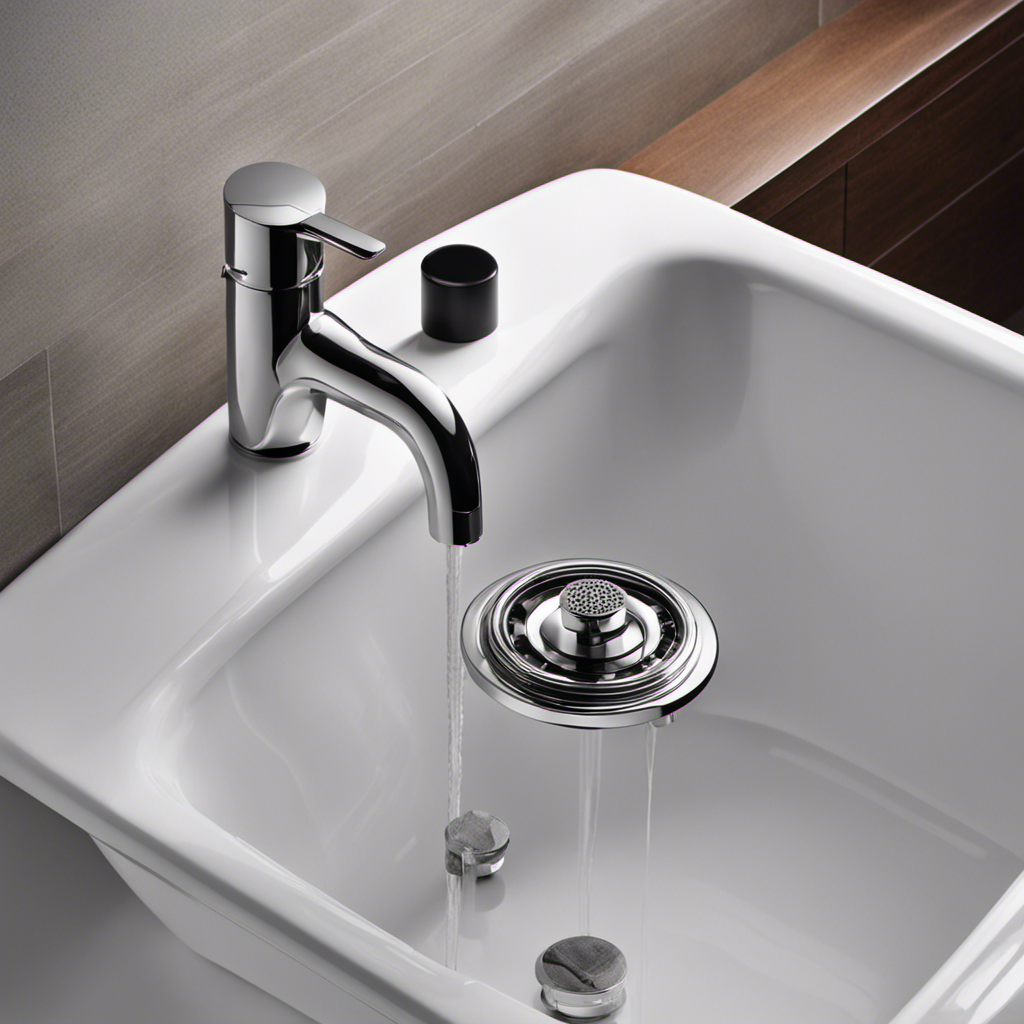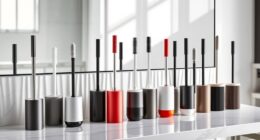Are you tired of dealing with stubborn mold around your bathtub? It’s time to take action and get rid of it once and for all.
In this informative guide, we will show you step-by-step how to remove mold from your bathtub using simple tools and materials.
You’ll learn the causes of mold growth, how to identify and assess the problem, and most importantly, how to prevent future mold growth in your bathroom.
Say goodbye to mold and hello to a clean and healthy bathing environment.
Key Takeaways
- Mold growth in bathrooms is caused by moisture and poor ventilation.
- Mold species commonly found in bathrooms include Aspergillus, Penicillium, and Cladosporium.
- Mold can grow on surfaces like tile grout, caulking, and shower curtains.
- Breathing in mold spores can lead to respiratory issues, allergies, and asthma attacks.
Understanding the Causes of Mold Around Bathtub
To understand why you’re dealing with mold around your bathtub, it’s important to recognize the common causes.
Mold growth is commonly found in bathrooms due to the presence of moisture and poor ventilation. The most common mold species found in these areas include Aspergillus, Penicillium, and Cladosporium. These molds thrive in damp environments with high humidity levels and can easily grow on surfaces such as tile grout, caulking, and shower curtains.
The health risks associated with mold are significant. Breathing in mold spores can cause respiratory issues, allergies, and even trigger asthma attacks. Prolonged exposure to mold can also lead to more severe health problems, such as lung infections and other respiratory illnesses.
It is crucial to address mold growth promptly to prevent these health risks. Regular cleaning and proper ventilation are essential to preventing mold growth in your bathtub area.
Identifying and Assessing the Mold Problem
Before tackling the mold issue, it’s important to accurately identify and assess the extent of the problem. Assessing mold damage helps determine the appropriate course of action and ensures the safety and wellbeing of your household. Not only is mold unsightly and unpleasant, but it also poses health risks, especially in a bathroom environment where moisture levels are high. To accurately assess the mold problem, you need to consider the following factors:
| Factors to Consider | Assessment Tips |
|---|---|
| Visible mold growth | Inspect the bathroom for any signs of visible mold growth, such as discoloration, black spots, or fuzzy patches. |
| Musty odor | Pay attention to any musty or earthy smells, as they may indicate the presence of hidden mold behind walls or under bathroom fixtures. |
| Water damage | Check for any signs of water damage, such as peeling paint, bubbling wallpaper, or warped flooring. |
Essential Tools and Materials for Mold Removal
One of the essential tools for removing mold in the bathroom is a scrub brush. Mold removal techniques require effective cleaning solutions and the right tools to ensure thorough cleaning and prevent the spread of mold spores.
When choosing a scrub brush, opt for one with stiff bristles to effectively scrub away the mold from the surfaces. Additionally, consider using a brush with a long handle to easily reach the corners and crevices around the bathtub.
Alongside a scrub brush, other tools and materials you will need for mold removal include rubber gloves, safety goggles, a face mask, a bucket, a spray bottle, a mild detergent or vinegar solution, and a sponge or cloth for wiping away the mold.
With these tools in hand, you can now proceed to the step-by-step guide to removing mold around the bathtub.
Step-by-Step Guide to Removing Mold Around Bathtub
Start by preparing your cleaning solution by mixing mild detergent or vinegar with water in a spray bottle.
This step-by-step process will guide you in effectively removing mold around your bathtub.
First, put on protective gloves and a mask to avoid any contact with the mold spores.
Next, spray the cleaning solution onto the affected areas and let it sit for about 10 minutes to allow it to penetrate the mold.
Then, using a scrub brush or sponge, gently scrub the mold away, making sure to reach all the nooks and crannies.
Rinse the area thoroughly with clean water to remove any residue.
Dry the surface completely to prevent future mold growth.
By following these steps and using effective cleaning solutions, you can successfully eliminate mold from your bathtub area.
Now, let’s move on to preventing future mold growth in your bathroom.
Preventing Future Mold Growth in Your Bathroom
To prevent future mold growth in your bathroom, make sure to regularly clean and dry all surfaces, especially those prone to moisture buildup.
Effective cleaning methods for bathroom tiles include using a mixture of equal parts water and vinegar, or a bleach solution diluted with water. Apply the solution to the tiles and scrub gently with a brush to remove any existing mold or mildew.
After cleaning, thoroughly dry the tiles to prevent any moisture from lingering.
In addition to cleaning, there are also natural remedies for preventing mold growth in bathrooms. These include using a dehumidifier to reduce humidity levels, ensuring proper ventilation by opening windows or using exhaust fans, and regularly inspecting and repairing any leaks or water damage.
Frequently Asked Questions
Can I Use Bleach to Remove Mold Around My Bathtub?
Yes, you can use bleach to remove mold around your bathtub. However, vinegar is a safer and more natural alternative. If the mold persists, consider hiring a professional for mold removal services.
How Long Does It Take to Remove Mold Around a Bathtub?
To remove mold around your bathtub, there are effective methods you can use. The time it takes to remove the mold depends on the severity. Using proper cleaning products and techniques will yield faster results.
Can I Prevent Future Mold Growth by Simply Keeping My Bathroom Clean?
To prevent future mold growth, it is important to keep your bathroom clean, but that alone may not be enough. Proper ventilation is crucial in preventing mold, as is controlling humidity levels in your bathroom.
Is It Safe to Remove Mold Around a Bathtub Without Wearing Protective Gear?
It is not safe to remove mold around a bathtub without wearing protective gear. Mold exposure without proper protection can pose health risks. Additionally, proper ventilation is crucial when removing mold to prevent further contamination.
Are There Any Natural Remedies or Alternative Methods for Removing Mold Around a Bathtub?
Looking for natural remedies or alternative methods to remove mold around your bathtub? There are several effective options available, such as vinegar, baking soda, hydrogen peroxide, and tea tree oil. Let’s explore these solutions further.
Conclusion
In conclusion, you’ve now learned the necessary steps to effectively remove mold around your bathtub. By understanding the causes and assessing the problem, you can equip yourself with the essential tools and materials needed for mold removal.
Following the step-by-step guide, you can eliminate the mold and prevent future growth in your bathroom. Remember, prevention is key to maintaining a clean and healthy environment.
So, take action today and bid farewell to mold, letting your bathroom shine like a polished gem in a sea of cleanliness.










